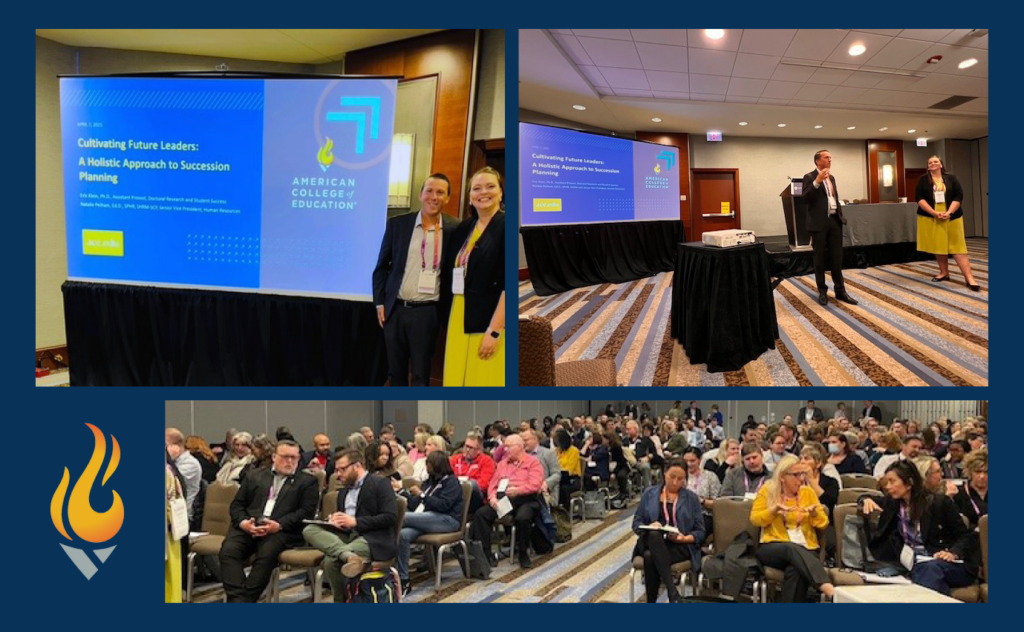
Leaders from across higher education gathered to explore strategies for advancing institutional resilience and student success at this year’s Higher Learning Commission (HLC) Annual Conference, Higher Learning 2025. Among the standout sessions was “Cultivating Future Leaders: A Holistic Approach to Succession Planning,” presented by American College of Education (ACE)’s own, Dr. Eric Klein, assistant provost of doctoral research and student success, and Dr. Natalie Pelham, senior vice president of human resources.
A Collaborative Model for Leadership Continuity
In their joint session on April 7, Klein and Pelham shared how ACE has developed a sustainable, data-informed approach to succession planning – one that bridges academic and administrative perspectives to strengthen leadership pipelines and institutional stability.
“Succession planning is a systematic process of identifying future leaders to ensure continuity of leadership,” Klein explained. He additionally noted that in higher education, this process is often hindered by cultural resistance, limited resources, and high turnover.
ACE’s model addresses these challenges through intentional collaboration between Human Resources and department leaders. By integrating succession planning into the institution’s Human Resources Information System (HRIS), ACE identifies employees who are ready for development and tailors growth plans accordingly.
Measurable Impact on Retention Growth
The results of this approach are compelling. In 2024 alone, ACE celebrated 54 internal promotions across faculty and staff. Plus, the institution’s turnover rate remains under 7.5%, significantly below the national average in the higher education industry.
“Due to our successful succession planning, emphasis on individual and departmental development, and ongoing collaboration with institutional leaders, we achieved over 80 internal promotions last year, representing 26.79% of our full-time workforce,” Pelham shared.
Planning for the Future
In 2024, ACE enhanced its approach by introducing workforce planning sessions with each department leader to pinpoint individual and team training needs. These sessions informed resource allocation in budgets and identified opportunities for upskilling beyond standard professional development funds.
“By focusing on our greatest asset – our employees – we empower our workforce and foster engagement, equipping our organization for ongoing strategic growth,” Klein emphasized.
ACE’s commitment to cultivating future leaders through a holistic and collaborative approach to succession planning serves as a model for institutions aiming to enhance leadership development, maintain stability and support long-term mission and goals. As higher education continues to navigate dynamic changes, such strategies are essential for fostering resilient and thriving academic communities.

